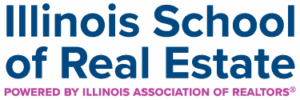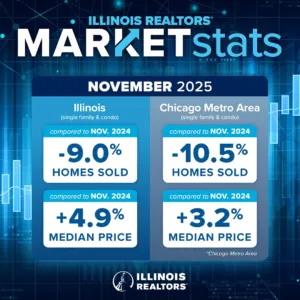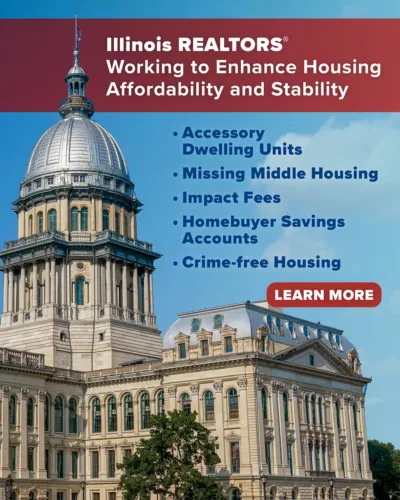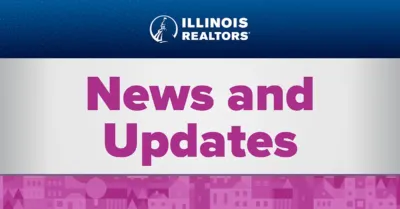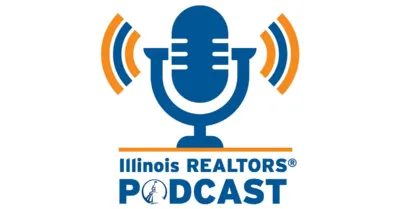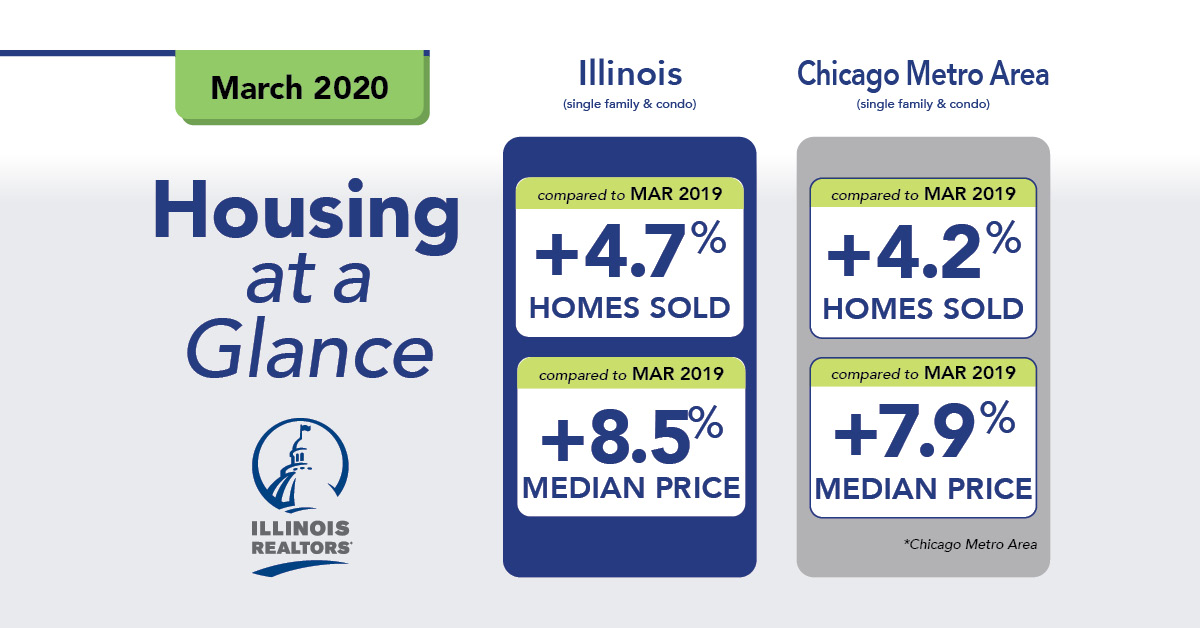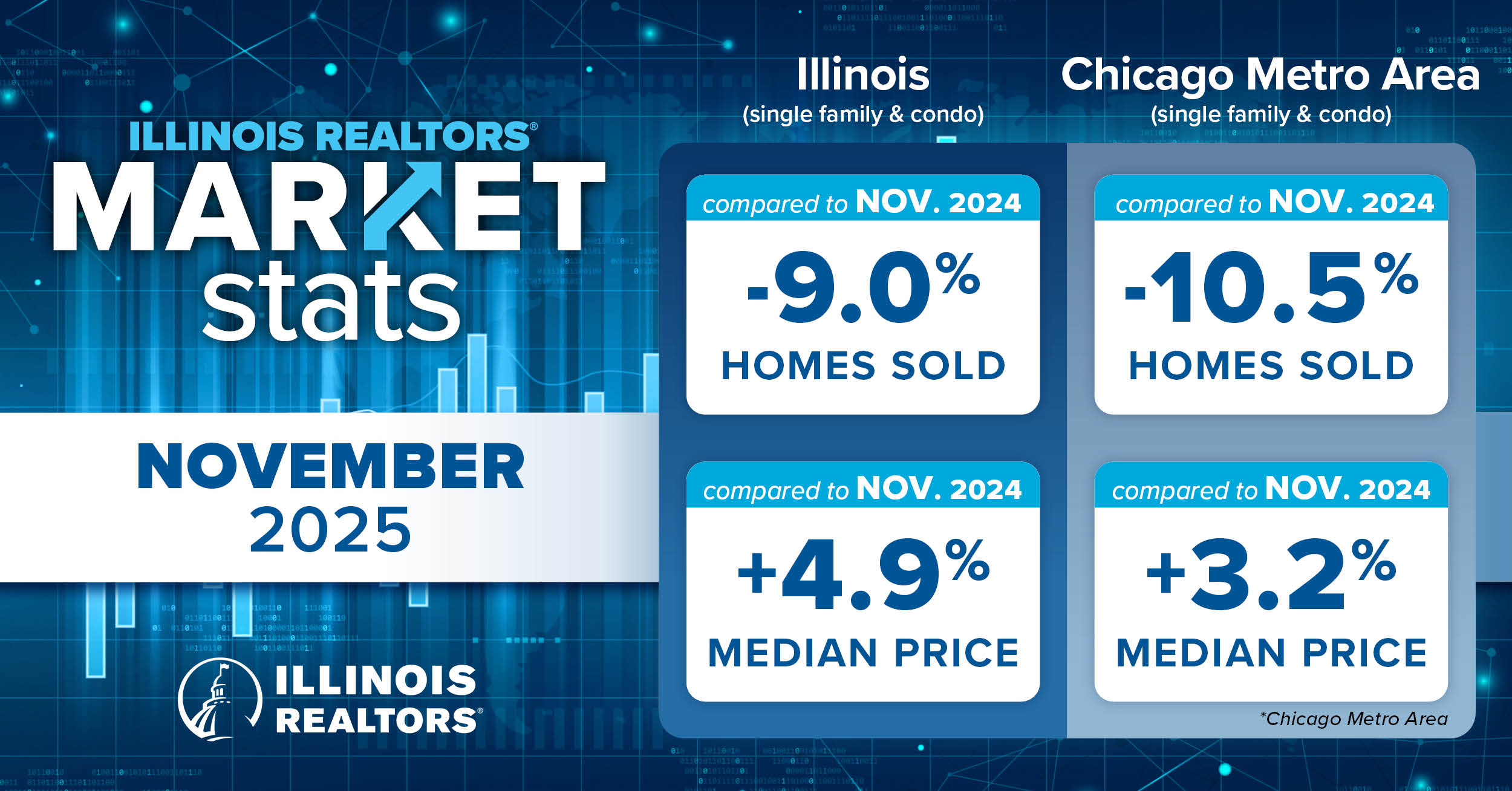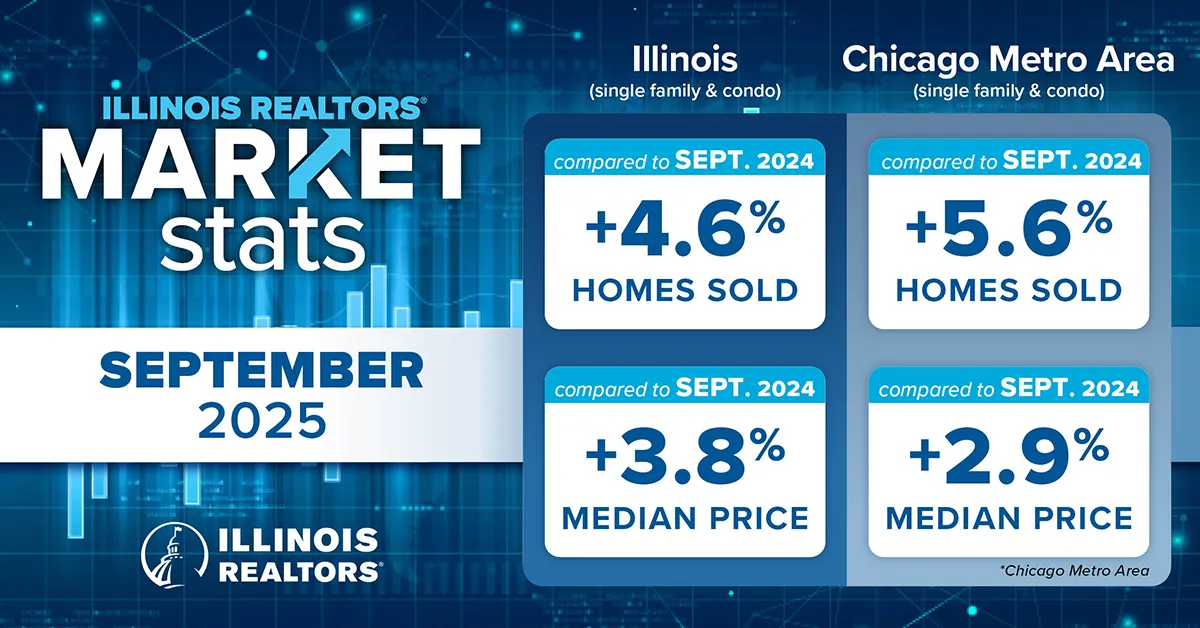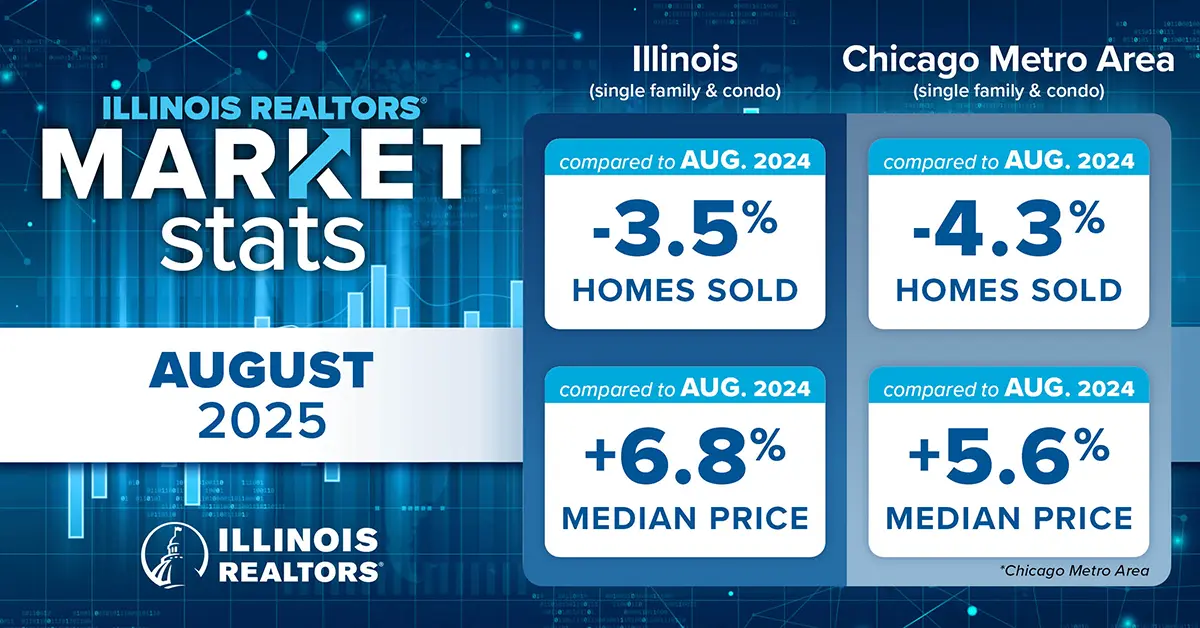Homebuyer demand pushed Illinois home sales and median prices higher in March even amid lower inventory and increased restrictions related to COVID-19, data from Illinois REALTORS® shows.
Statewide home sales (including single-family homes and condominiums) in March totaled 12,182 homes sold, up 4.7 percent from 11,637 in March 2019.
The statewide median price in March was $217,000, up 8.5 percent from March 2019, when the median price was $200,000. The median is a typical market price where half the homes sold for more and half sold for less.
“Illinois benefited from a strong start to the 2020 housing market and that momentum continued in March with solid gains in home sales and median prices, even as COVID-19 began to have a greater impact on the overall economy,” said Ed Neaves, president of Illinois REALTORS® and designated managing broker of Berkshire Hathaway HomeServices Snyder Real Estate in Bloomington.
The time it took to sell a home in March averaged 63 days, unchanged from the year before. Available inventory totaled 46,852 homes for sale, a 10.6 percent decline from 52,404 homes in March 2019.
According to the data, home sales in the Champaign-Urbana MSA (Champaign, Piatt and Ford counties) totaled 214 units, a 7.0 percent increase while the median price was up 1.7 percent to $150,500; home sales in the Peoria MSA (Marshall, Peoria, Stark, Tazewell and Woodford counties) totaled 409, a 4.9 percent increase while the median price increased 12.2 percent to $122,000.
The monthly average commitment rate for a 30-year, fixed-rate mortgage was 3.45 percent in
March, a decrease from 3.47 percent the previous month, according to the Federal Home Loan Mortgage Corp. In March 2019, it averaged 4.27 percent.
In the nine-county Chicago Metro Area, home sales (single-family and condominiums) in March totaled 8,579, up 4.2 percent from March 2019 sales of 8,231 homes. The median price in March was $260,000 in the Chicago Metro Area, an increase of 7.9 percent from $241,000 in March 2019.
“The March data on the housing market are probably the last to reflect the pre-pandemic impact of the economy,” said Geoffrey J.D. Hewings, director of the Regional Economics Applications Laboratory at the University of Illinois. “Unlike the recession that started in 2008 when there was a gradual increase in unemployment for the next several years, the events of the first quarter of 2020 have revealed a precipitous decline in employment levels (and a concomitant increase in unemployment rates). The consumer sentiment indices reported this month, most notably the decline in the Fannie Mae Home Purchase Sentiment Index, suggest that over the coming months, we can expect to see a growing negative impact on housing prices and sales.”
The city of Chicago saw year-over-year home sales increase 1.0 percent with 2,082 sales in March, compared to 2,062 a year ago. The median price of a home in the city of Chicago in March was $320,000 up 10.1 percent compared to March 2019 when it was $290,700.
“Though we likely won’t see a fuller picture of coronavirus’ impact on the housing market until April’s numbers are released, we are happy to see positive momentum in March,” said Maurice Hampton, president of the Chicago Association of REALTORS® and owner of Centered International Realty. “Clearly, demand kept pace, despite the pandemic, with an uptick in closed sales and sales price over last year. However, we also saw a sharp decline in inventory, something we will continue to keep our eyes on for the future, as homeowners react to the uncertainty of the current environment.”
Sales and price information are generated by Multiple Listing Service closed sales reported by 26 participating Illinois REALTORS® local boards and associations including Midwest Real Estate Data LLC data as of April 7, 2020 for the period March 1 through March 31, 2020. The Chicago Metro Area, as defined by the U.S. Census Bureau, includes the counties of Cook, DeKalb, DuPage, Grundy, Kane, Kendall, Lake, McHenry and Will.
Illinois REALTORS® is a voluntary trade association whose more than 50,000 members are engaged in all facets of the real estate industry. In addition to serving the professional needs of its members, Illinois REALTORS® works to protect the rights of private property owners in the state by recommending and promoting legislation to safeguard and advance the interest of real property ownership.
Find Illinois housing stats, data and the University of Illinois REAL forecast at www.IllinoisRealtors.org/MarketStats.

